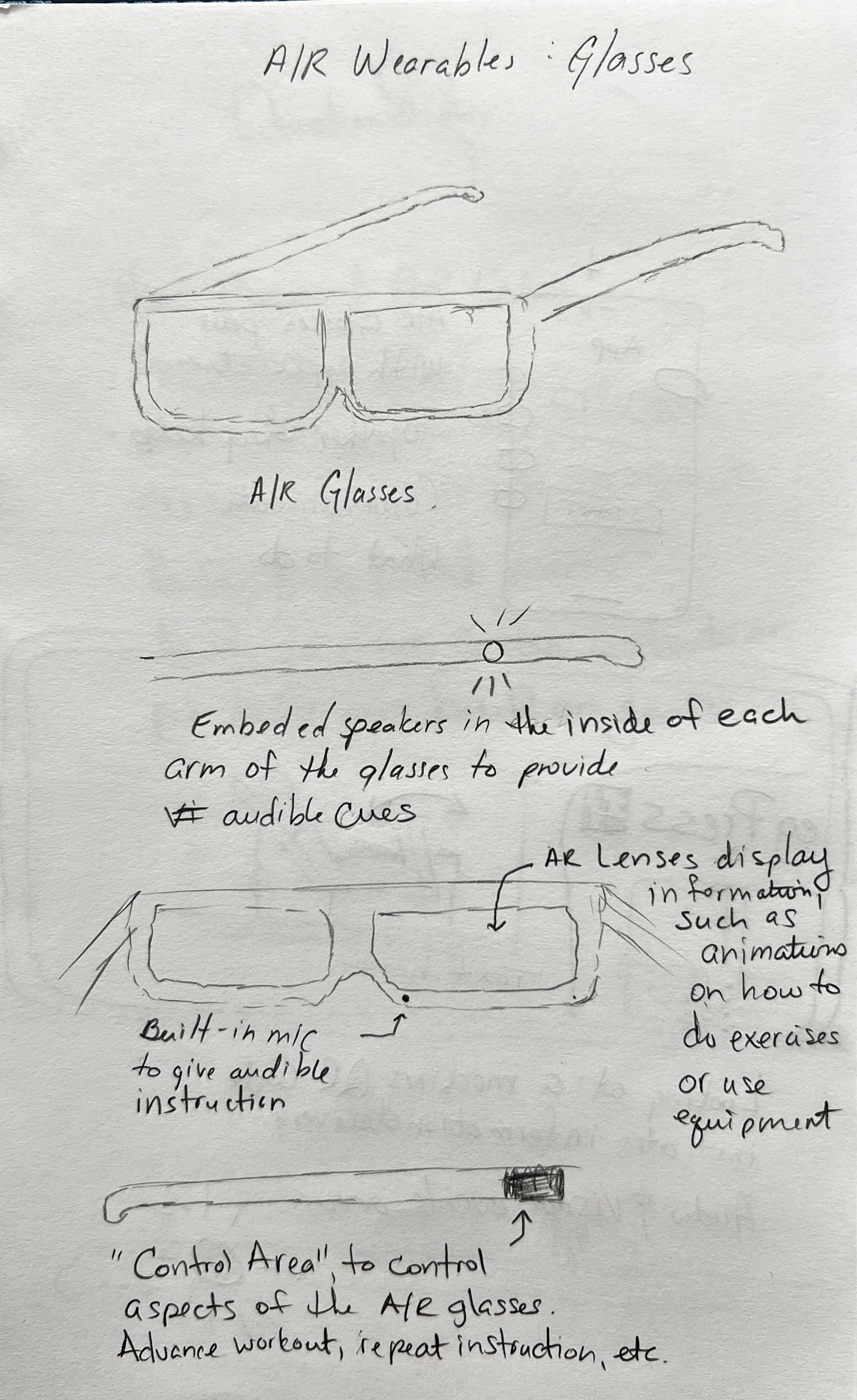
augmented reality & fitness
A UX Graduate Degree Capstone project exploring the use of Augmented Reality to alleviate “gymtimidation.”
-
Responsibilities:
- Research
- Ideation
- Wireframing
- Prototyping
- UI and graphic design
- Usability testing & UX design -
Challenges:
- Limited coding experience
- Limited graphic design experience
- Project prototype pivot -
Tools & Software:
- Miro
- Figma
- Adobe Photoshop
- Adobe Premiere -
Duration:
- 20 weeks total
- Weeks 1-10: Research, empathize, define.
- Weeks 11-20: Ideate, prototype, test.
Design Process
Design Process
>
>
>
EmpathizE & Define
-
In our efforts to identify problem areas related to "gymtimidation," our team deployed a survey by leveraging frequent social media posts and by hanging flyers.
-
We received 53 completed responses over two weeks. From these responses, we gathered the following data points related to gym anxiety:
Participants felt that they would have a better experience if they had more knowledge about exercises or equipment.
Participants have experienced intimidation that affected their decision to work out at a fitness center.
Participants felt self-conscious, embarrassed, anxiousness, or shame.
-
From our analysis, we determined three primary user segments of interest:
The Independent Exercisers: Those participants who do not want to go to a fitness center and prefer to work independently.
The Fitness Gurus: Those participants who are happy working out in a fitness center who haven't experienced "gymtimidation."
The Fitness Help-Seekers: Those participants who work out in a fitness center or want to work out in a fitness center have experienced feelings associated with "gymtimidation" that need more help and education regarding fitness exercises or fitness equipment.
We determined that the third user segment would most benefit from an Augmented Reality solution to help with "gymtimidation."
Individual and group ideation sessions were used to develop and sketch prototype designs:
Personalized Trainer (Audio AR): A voice-controlled audio personal trainer providing exercise guidance and motivational support.
AR Demo via Mobile Device: Scan a QR code for AR animations demonstrating exercises with audio and visual cues, including text for the audibly impaired.
Wearable Demos (AR Glasses): Pair AR glasses for hands-free audio and visual exercise guidance, featuring a heads-up display and text for the audibly impaired.
Educational App: Scan QR codes for instructional audio cues and basic animations, offering exercise guidance without full AR functionality.
Ideate
Prototype & Test
AN AUGMENTED REALITY FITNESS APPLICATION WAS DESIGNED & A VIDEO PROTOTYPE WAS CREATED:
The prototype application would include functionality to utilize the users’ cameras to “scan” equipment and display exercises they can perform.
The prototype application would include a visual and audible tutorial on performing the exercise.
The prototype application would include high-contrasting visuals and text-based instructions for disabled individuals.
The prototype application would be a video prototype that users would watch, including a post-video survey.
Analysis & Findings
Qualitative Data:
Overall, 60% of all participants indicated that our initial prototype was well received.
There was moderate feedback for features to be changed or added.
Quantitative Data:
70% of participants indicated they experienced “gymtimdiation.”
89.5% of participants indicated that trainAR would help reduce or eliminate anxiety related to lack of knowledge when using gym equipment.
85% of participants said they would use an application like trainAR in a fitness center.
55% of participants stated they would try to use a wearable AR device while using an application like trainAR.
Reflections & Feedback
Based on our feedback, we narrowed down the leading feature suggestions and additions mentioned by the survey participants and created a feature prioritization matrix.
Considerations for future prototypes
Another consideration that could be explored would be to abandon the visual aspect of the AR (scanning feature) and make it a completely audible AR experience based on RFID or geofencing technologies. The idea would be that as someone approached equipment or machines, the audio would automatically start to play to help them learn. This concept would be similar to audio tours in museums.
Perhaps visual AR isn’t need to solve the problem
Our project proves that people experience “gymtimidation” due to a lack of knowledge about exercising, performing movements, or using gym equipment. We demonstrated that AR could solve this, but more iterative research needs to be done to determine which specific area(s) of AR would best help with the problem.
















